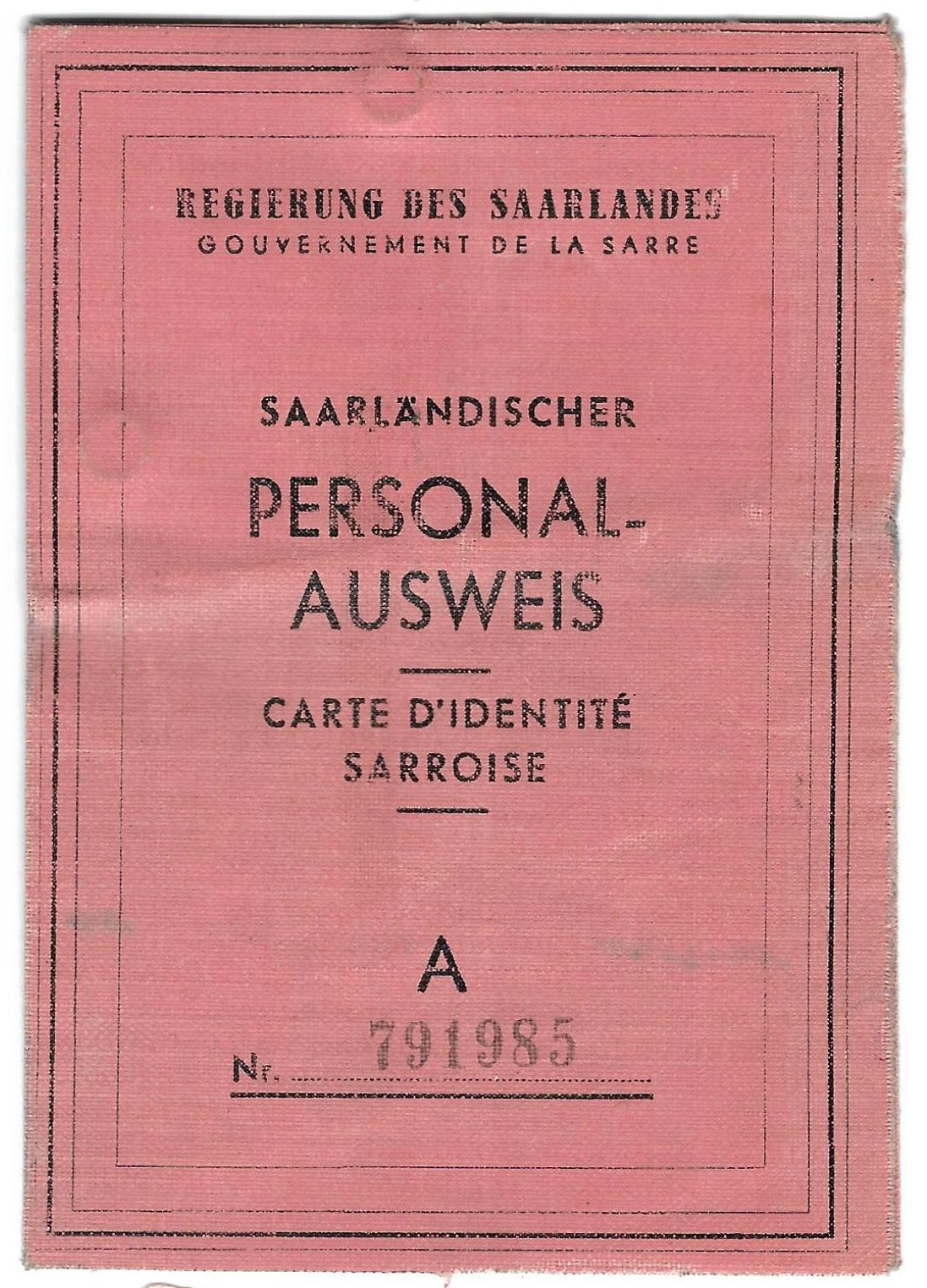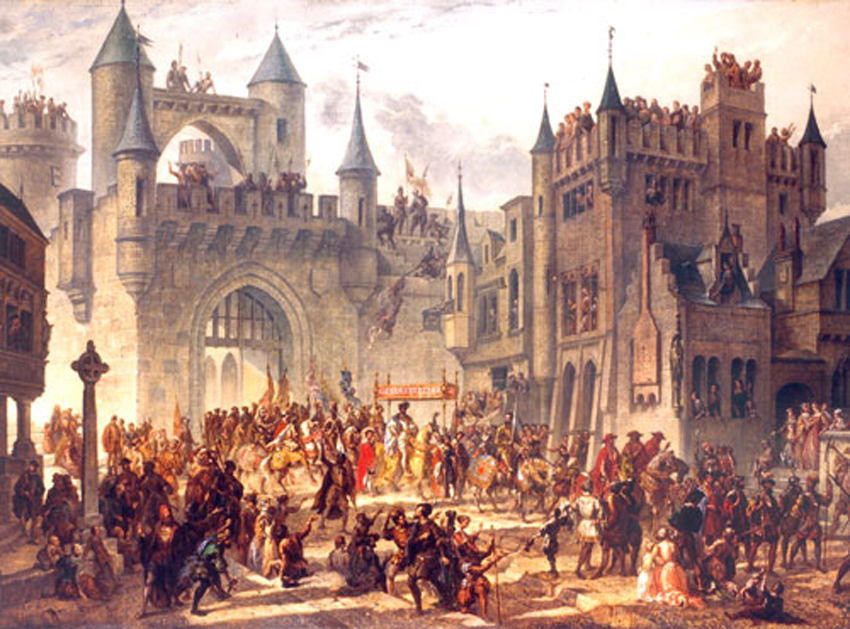|
Borg, Saarland
Borg is a German village in the municipality of Perl, Saarland, Perl, Saarland. It is located 5 km north east of Perl and 11 km south west of Nennig on the Moselle (river), River Mosel. It lies at a height of 355 m and has a population of 370. The nearby Roman Villa Borg is one of the Saarland's most important archaeological sites. History Borg is first mentioned in 1569 as being part of the Parish of Perl. However, excavations show that there were much earlier settlements. In 1743, the village was given its own church and a school was built in 1749. Over the years it belonged to St Alban's Charterhouse in Trier, to the dioceses of Metz and Trier, and to the Luxembourg, Duchy of Luxembourg. From 1816 to 1840, Borg enjoyed the status of a mayoralty but thereafter came under the jurisdiction of Perl. Pillingerhof, 2 km to the south west, was once a Luxembourg castle but is now an agricultural establishment. Church The parish church of St John the Baptist (''St. Johanne ... [...More Info...] [...Related Items...] OR: [Wikipedia] [Google] [Baidu] |
Perl, Saarland
Perl () is a municipality in Merzig-Wadern, Saarland, Germany. In 2020 its population was 8,824. Geography Overview It is situated on the right bank of the river Moselle, on the border with Luxembourg and France, approximately 25 km southeast of Luxembourg City. It is joined by a bridge across the Moselle with Schengen, Luxembourg, Schengen in Luxembourg and by a second bridge between Nennig and Remich. A fine Ancient Rome, Roman mosaic has been found in the village of Nennig. Subdivision The municipality consists of Perl and 13 villages (''Ortsteil''): Administration * 1989 - 2007 : Anton Hoffmann, Christian Democratic Union (Germany), CDU * 2007 - 2015 : Bruno Schmitt, Social Democratic Party of Germany, SPD * 2015 - : Ralf Uhlenbruch, Christian Democratic Union (Germany), CDU Education There have been schools in the municipality of Perl for several centuries, with the oldest schooling and school building records dating back to the year 1743. The Deutsch-Luxem ... [...More Info...] [...Related Items...] OR: [Wikipedia] [Google] [Baidu] |
Roman Villa Borg
The Roman Villa Borg is a reconstructed Roman ''villa rustica'' located near the villages of Borg and Oberleuken in the municipality of Perl in Saarland, Germany. Discovered at the end of the 19th century, the site was excavated in the late 1980s. Reconstruction work, which began in the mid-1990s, was virtually completed in late 2008 although further excavation work is still continuing. The site is a popular tourist attraction with some 50,000 visitors per year. History It was Johann Schneider, a local schoolteacher, who around the year 1900 first came across the site after noticing unnatural mounds in the area. He soon discovered the remains of walls as well as Roman pottery. Partly as a result of the World Wars, little was done until the mid-1980s when the Saarland authorities fenced the site off after illegal excavations started to threaten its survival. Systematic excavation work began in 1987. The excavations soon revealed evidence of pre-Roman inhabitation directly below th ... [...More Info...] [...Related Items...] OR: [Wikipedia] [Google] [Baidu] |
Saarland
Saarland (, ; ) is a state of Germany in the southwest of the country. With an area of and population of 990,509 in 2018, it is the smallest German state in area apart from the city-states of Berlin, Bremen, and Hamburg, and the smallest in population apart from Bremen. Saarbrücken is the state capital and largest city; other cities include Neunkirchen and Saarlouis. Saarland is mainly surrounded by the department of Moselle (Grand Est) in France to the west and south and the neighboring state of Rhineland-Palatinate in Germany to the north and east; it also shares a small border about long with the canton of Remich in Luxembourg to the northwest. Having long been a relatively small part of the long-contested territories along the Franco-German linguistic border, Saarland first gained specific economic and strategic importance in the nineteenth century due to the wealth of its coal deposits and the heavy industrialization that grew as a result. Saarland was first est ... [...More Info...] [...Related Items...] OR: [Wikipedia] [Google] [Baidu] |
Nennig
Nennig is a village in the Saarland, Germany, part of the municipality of Perl. It is situated on the river Moselle, opposite Remich, Luxembourg. Overview Nennig is known for a Roman villa containing well-preserved mosaics that were excavated in the 19th century. The village was a condominium of the Trier bishopric, Lorraine (the Kingdom of France from 1766) and Luxembourg until its annexation by Revolutionary France in 1794. During the Second World War World War II or the Second World War (1 September 1939 – 2 September 1945) was a World war, global conflict between two coalitions: the Allies of World War II, Allies and the Axis powers. World War II by country, Nearly all of the wo ... Nennig was almost completely destroyed as the village changed hands several times in late-1944 and early-1945. Photogallery Image:Schloss berg nennig nord.jpg, Schloss Berg Image:Roemische villa nennig.jpg, Roman villa File:Paegniarii gladiators (from Nennig mosaic).jpg, Mosaic ... [...More Info...] [...Related Items...] OR: [Wikipedia] [Google] [Baidu] |
Moselle (river)
The Moselle ( , ; ; ) is a river that rises in the Vosges mountains and flows through north-eastern France and Luxembourg to western Germany. It is a left bank tributary of the Rhine, which it joins at Koblenz. A small part of Belgium is in its basin as it includes the Sauer and the Our. Its lower course "twists and turns its way between Trier and Koblenz along one of Germany's most beautiful river valleys."''Moselle: Holidays in one of Germany's most beautiful river valleys'' at www.romantic-germany.info. Retrieved 23 Jan 2016. In this section the land to the north is the which stretches into |
Trier
Trier ( , ; ), formerly and traditionally known in English as Trèves ( , ) and Triers (see also Names of Trier in different languages, names in other languages), is a city on the banks of the Moselle (river), Moselle in Germany. It lies in a valley between low vine-covered hills of red sandstone in the west of the state of Rhineland-Palatinate, near the border with Luxembourg and within the important Mosel (wine region), Moselle wine region. Founded by the Ancient Romans, Romans in the late 1st century BC as ''Augusta Treverorum'' ("The City of Augustus among the Treveri"), Trier is considered Germany's oldest city. It is also the oldest cathedral, seat of a bishop north of the Alps. Trier was one of the four capitals of the Roman Empire during the Tetrarchy period in the late 3rd and early 4th centuries. In the Middle Ages, the archbishop-elector of Trier was an important prince of the Church who controlled land from the French border to the Rhine. The archbishop-elector of Tr ... [...More Info...] [...Related Items...] OR: [Wikipedia] [Google] [Baidu] |
Metz
Metz ( , , , then ) is a city in northeast France located at the confluence of the Moselle (river), Moselle and the Seille (Moselle), Seille rivers. Metz is the Prefectures in France, prefecture of the Moselle (department), Moselle Departments of France, department and the seat of the parliament of the Grand Est Regions of France, region. Located near the Tri-border area, tripoint along the junction of France, Germany and Luxembourg,Says J.M. (2010) La Moselle, une rivière européenne. Eds. Serpenoise. the city forms a central part of the European Greater Region and the SaarLorLux euroregion. Metz has a rich 3,000-year history,Bour R. (2007) Histoire de Metz, nouvelle édition. Eds. Serpenoise. having variously been a Celts, Celtic ''oppidum'', an important Gallo-Roman city,Vigneron B. (1986) Metz antique: Divodurum Mediomatricorum. Eds. Maisonneuve. the Merovingian capital of Austrasia,Huguenin A. (2011) Histoire du royaume mérovingien d'Austrasie. Eds. des Paraiges. p ... [...More Info...] [...Related Items...] OR: [Wikipedia] [Google] [Baidu] |
Luxembourg
Luxembourg, officially the Grand Duchy of Luxembourg, is a landlocked country in Western Europe. It is bordered by Belgium to the west and north, Germany to the east, and France on the south. Its capital and most populous city, Luxembourg City, is one of the four institutional seats of the European Union and hosts several EU institutions, notably the Court of Justice of the European Union, the highest judicial authority in the EU. As part of the Low Countries, Luxembourg has close historic, political, and cultural ties to Belgium and the Netherlands. Luxembourg's culture, people, and languages are greatly influenced by France and Germany: Luxembourgish, a Germanic language, is the only recognized national language of the Luxembourgish people and of the Grand Duchy of Luxembourg; French is the sole language for legislation; and both languages along with German are used for administrative matters. With an area of , Luxembourg is Europe's seventh-smallest count ... [...More Info...] [...Related Items...] OR: [Wikipedia] [Google] [Baidu] |
World War II
World War II or the Second World War (1 September 1939 – 2 September 1945) was a World war, global conflict between two coalitions: the Allies of World War II, Allies and the Axis powers. World War II by country, Nearly all of the world's countries participated, with many nations mobilising all resources in pursuit of total war. Tanks in World War II, Tanks and Air warfare of World War II, aircraft played major roles, enabling the strategic bombing of cities and delivery of the Atomic bombings of Hiroshima and Nagasaki, first and only nuclear weapons ever used in war. World War II is the List of wars by death toll, deadliest conflict in history, causing World War II casualties, the death of 70 to 85 million people, more than half of whom were civilians. Millions died in genocides, including the Holocaust, and by massacres, starvation, and disease. After the Allied victory, Allied-occupied Germany, Germany, Allied-occupied Austria, Austria, Occupation of Japan, Japan, a ... [...More Info...] [...Related Items...] OR: [Wikipedia] [Google] [Baidu] |
Stations Of The Cross
The Stations of the Cross or the Way of the Cross, also known as the Via Dolorosa, Way of Sorrows or the , are a series of fourteen images depicting Jesus in Christianity, Jesus Christ on the day of Crucifixion of Jesus, his crucifixion and accompanying prayers, These stations are derived from the imitations of the in Jerusalem, Palestine, which is a traditional processional route symbolizing the path Jesus walked from Lions' Gate to Mount Calvary. The objective of the stations is to help the Christian faithful to make a spiritual Christian pilgrimage, pilgrimage through contemplation of the Passion (Christianity), Passion of Christ. It has become one of the most popular devotions and the stations can be found in many Western Christian churches, including those in the Roman Catholic, Lutheran, Anglican, and Methodist traditions. Commonly, a series of 14 images will be arranged in numbered order along a path, along which worshippers—individually or in a procession—move in or ... [...More Info...] [...Related Items...] OR: [Wikipedia] [Google] [Baidu] |
Villages In Saarland
A village is a human settlement or community, larger than a hamlet but smaller than a town with a population typically ranging from a few hundred to a few thousand. Although villages are often located in rural areas, the term urban village is also applied to certain urban neighborhoods. Villages are normally permanent, with fixed dwellings; however, transient villages can occur. Further, the dwellings of a village are fairly close to one another, not scattered broadly over the landscape, as a dispersed settlement. In the past, villages were a usual form of community for societies that practice subsistence agriculture and also for some non-agricultural societies. In Great Britain, a hamlet earned the right to be called a village when it built a church.-4; we might wonder whether there's a point at which it's appropriate to talk of the beginnings of French, that is, when it wa ... ''village'', from Latin ''villāticus'', ultimately from Latin ''villa'' (English ''villa''). Ce ... [...More Info...] [...Related Items...] OR: [Wikipedia] [Google] [Baidu] |





